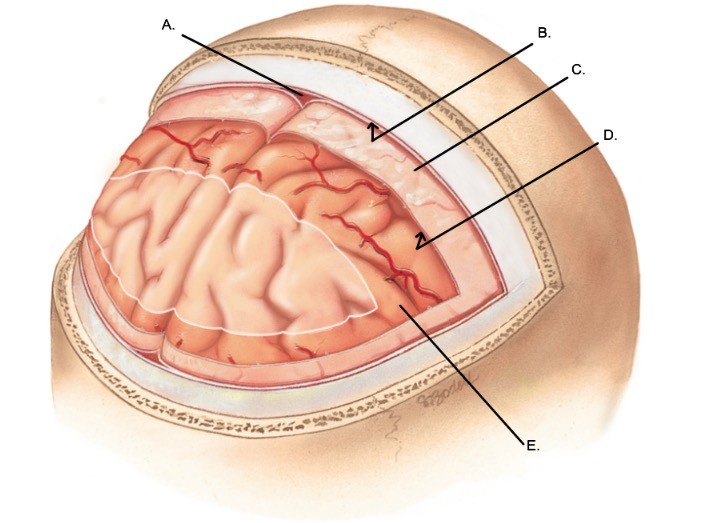 What does "D" represent on the diagram of the skull and brain?
What does "D" represent on the diagram of the skull and brain?
A. Pia mater
B. Subdural space
C. Dural venous sinus
D. Arachnoid mater
E. Subarachnoid space
Answer: E
You might also like to view...
Answer the following statements true (T) or false (F)
1. When the kidney secretes hydrogen ions, it lowers the pH of the blood. 2. When the kidney secretes hydrogen ions, it lowers the pH of the urine. 3. When the kidney secretes a hydrogen ion, it absorbs a sodium ion. 4. When the kidneys acidify the urine, they conserve sodium bicarbonate. 5. In the kidney, an amino group accepts a hydrogen ion to form ammonia, which is excreted in the urine.
Which of the following is considered to be one of the primary digestive system hormones?
A. Hydrochloric acid B. Bile C. Pancreatic amylase D. Gastrin
Which of the following is not a feature that almost all connective tissues have in common?
A. Most cells are not in direct contact with each other. B. Most connective tissues are highly vascular. C. Cells usually occupy less space than the extracellular material. D. Protein fibers are usually present in the ground substance. E. Ground substance is so scarce that it is not visible with a light microscope.
Celiac disease is caused by an allergy to gluten, a protein found naturally in some grains. The disease damages the lumen of the small intestine, specifically the villi and microvilli. Several symptoms associated with celiac disease would be
a) heartburn, excessive vomiting, and nausea. b) red blood mixed with the stools, light-headedness due to lack of hydration, and weakness. c) fever, elevated white blood cell count and loss of appetite. d) abdominal bloating and pain, chronic diarrhea due to excess unabsorbed water, and weight loss.